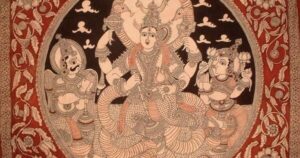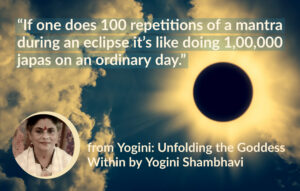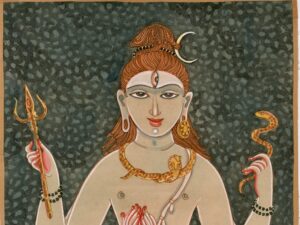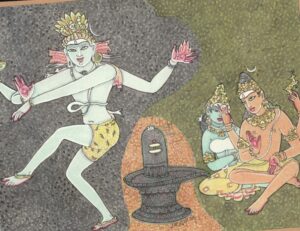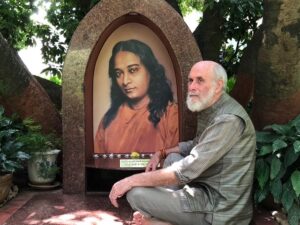2018 marks the fourth International Yoga Day since its inception in 2015 by the United Nations. It has now become an important annual global event and special day in India overall. Each year marks additional progress in spreading the practice and study of Yoga and its acceptance into schools, businesses and all walks of life. It is important to keep this momentum going as Yoga holds the keys to the transformation of the human being to a higher level of awareness.
India is not just a country but a great dharmic civilization rooted in Yoga practice and Yoga philosophy since the most ancient times. It looks back to great Yogis and Rishis as its gurus and guides and highest role models. The teacher or deity in a sitting meditation pose, whether Lord Shiva or Lord Buddha, is the dominant art form and cultural image in India that has spread throughout Asia and to the entire world.
Yoga is India’s great civilizational gift to the world and it is important for India to continue to nourish its roots. Yoga of some form can be found pervading the entire culture of India, from a local village level to a broad national level. This includes a yogic influence on music, dance, art, science, medicine, philosophy, politics and economics, including in the spiritual realm where Yoga always excels. Skill in action, focus in perception, unitary direction of energy, determination of effort, and excellence in achievement, along with inner composure and calm are all aspects of Yoga.
Yet Yoga is also misunderstood today. Its outer physical side sometimes serves to cover over its many other aspects of profound thought, creative expression and deep meditation. These should always go together. Our body is a temple for the deity that is our own inmost consciousness.
All life is Yoga, as has been eloquently stated. Yoga is important as a way of life, self-education and character building. It helps us properly use and master our body, senses and mind, including control of our attention, thoughts and emotions. Yoga should be an integral part of our daily lives and our education for young and old.
Yoga arises from nature and teaches us to live in harmony with the Earth and the stars. It is not simply a manmade or historical invention, but a means of integration into the cosmic life. Yoga is inherently an ecological pursuit and promotes ecological awareness, concern for the environment, respect for the Earth and all of its creatures, large and small. Yoga affords us a planetary vision in which we look at the world as a whole, not divided into conflicting countries and communities.
Each of the eight limbs of traditional Yoga has its specific value. We will discuss these briefly for a broader understanding of the scope of Yoga.
Yamas and Niyamas. Yoga begins with yogic values and principles in our attitudes and behavior, which means kindness, compassion, humility, respect, courage and detachment. Yoga has its specific dharmic code of yamas and niyamas, principles and practices of right living
For a quick overview of the Yamas:
Ahimsa or non-harming reducing the harm going on in the world, not just avoiding violence; Satya means promoting truth in thought, word and deed, not just informational accuracy but a true perception of the unity of life; Brahmacharya means control of our senses and bodily urges and not abusing others for our personal enjoyment; Asteya is not merely non-stealing but not expropriating anything for ourselves; Aparigraha or not craving what other people have, means not thinking that we own anything. Such attitudes bring clarity and harmony to the mind and heart.
For a quick overview of the Niyamas:
Tapas or self-discipline and self-control; Svadhyaya or Self-study and study of the works of the great gurus; Ishvara Pranidhana or consecrating ourselves to the Divine within and around us; Saucha or purity in thought, word and deity; and Santosha or contentment within ourselves. These dharmic ways of living are not only the foundation of Yoga they also form its goal. Without them the other yogic practices remain incomplete.
Asanas form the next aspect of Yoga, which constitute the ideal form of exercise for giving strength, flexibility, purity and calm to the body, relieving stress, tension, blockages and difficulties in circulation and movement. Yoga asanas help relax the body overall so that we can move into a state of stillness and access the inner dimensions of our energy and consciousness. They bring us into harmony with the Earth and her ability to support and nourish the whole of life.
Pranayama and yogic breathing are very important for providing us energy for both body and mind. All healing comes through the power of prana and pranayama allows us to develop that in a simple and direct manner. Those who have the power of prana become natural healers and a source of inspiration for all.
Pratyahara teaches us to be mindful of how we use our senses. Our senses usually go outward and cause us to lose our energy and focus to the external world. Ayurveda also teaches us that wrong use of the senses is one of the main causes of diseases, particularly running after what feels good or tastes good, rather than what is actually good for us. We must remember that the senses are our instruments and we should not let them dictate what we do. What may be pleasurable short term may not long term make us happier or make us feel better. If we learn to use our senses in a contemplative manner they can show us the boundless beauty of nature that is much more fascinating than any media screen.
These outer practices of Yoga then lead to the yogic factors of working on the mind.
Dharana, the Yoga practice of concentration helps us develop our power of attention, which is the foundation for all learning. Today we are usually distracted by the many disturbances and stimulations around us that abound in the information-technology era. While it is good to have many interests, it is also important that we are aware of what we are bringing into our lives. Today our attention is largely under the sway of the media and the new technology. In that process we are losing control of our own minds and through that our lives often to commercial forces. Yoga teaches us be able to direct our power of attention where and when we wish to, not to be driven by outside influences.
Dhyana or meditation forms the essence of Yoga and most important practice, which follows from these foundational disciplines. It teaches us to take the attitude of a witness and observe not only the outer world and its events, but also what is happening inside our own minds. Whatever we carefully meditate upon will reveal its secrets to us, starting with all forms of nature extending to our own thoughts. Meditation, though it does not require we actually do anything, is the most important activity of our lives and helps us best understand our life purpose, direction and goal. The ability to meditate is much more important than the ability to access the internet. It allows us to access Cosmic Intelligence.
Samadhi is the ultimate goal of Yoga as a state of Samadhi or unitary awareness, in which we can experience the highest inspiration, creativity, happiness and peace. True happiness comes from within and is enduring. Pleasure that comes from the outside however enticing can never bring lasting happiness. By bringing harmony and balance to body, prana, senses and mind, Yoga puts us in this place of ananda, so that we can share true happiness and well-being with all.
Ayurveda: The Yogic Healing Tradition
Ayurveda and Yoga are not separate teachings but have been related disciplines since the most ancient times. Ayurveda, India’s natural healing tradition for body and mind, takes the principles and philosophy of Yoga and applies it to the realm of wellness and medicine at both physical and psychological levels, though a yogic understanding of the energies, tissues and organs of the physical body and how these relate to the mind. The same gurus like Patanjali who taught Yoga also taught Ayurveda. While Yoga is the Vedic system of sadhana and the pursuit of Self-realization, Ayurveda is the Vedic system of medicine, right living and self-healing. The two naturally go together. Our lives should be a sadhana.
Ayurveda teaches us that our best medicine is the food that we eat, which should be natural, harmonious and sattvic, full of prana. Ayurveda teaches us that just as we need our daily bread, so we need our daily herbs, which provide a higher and more powerful form of energy and nutrition. For this Ayurveda has a wide array of herbal preparations and oils for both internal and external usage. Ayurveda provides us many other important health guidelines and treatment recommendations based upon our natural temperament and individual constitution for which it has its own special methods to determine.
Yoga and Ayurveda teach us that there is a powerful healing force of Prana within each one of us, which is also connected to the prana or healing force of nature. We can heal ourselves if we learn the secrets of Prana and the breath. Ayurveda teaches us the five forms of Prana and how to work with them both for optimal well-being and to connect with the higher powers of awareness.
Conclusion: Yoga at a Cosmic Level
Yoga teaches us that the universe is a formation of the light of consciousness – that behind matter is energy, behind energy is information, behind information is intelligence, and behind intelligence is consciousness.
There is a light of consciousness (Chidjyoti) within each one of us that is boundless, vast and immortal. This yogic view of the universe is a cosmology of consciousness, compared to which the cosmology of modern physics, as it breaks through the barriers of time and space, is but an introduction.
It is important that we follow a yogic lifestyle and maintain a daily yoga practice from a young age, so it becomes part of our regular life regimen and natural way of action. Yoga is easy to integrate into our lives, with yoga asanas, pranayama and meditation both morning and evening, extending to special seasonal retreats or longer yoga sessions.
Yoga can help you do whatever you need to do better, whether it is work, art, teaching or just enjoying the beauty and wonder of being alive. The important thing is to have Yoga as part of your life. Then Yoga can guide your life and bring greater harmony into all that you do.
May International Yoga Day and the practice of Yoga at any time of the year awaken that light of Consciousness within you – the Purusha or inner Self that is the foundation and goal of all Yoga and the resort of all immortality!

